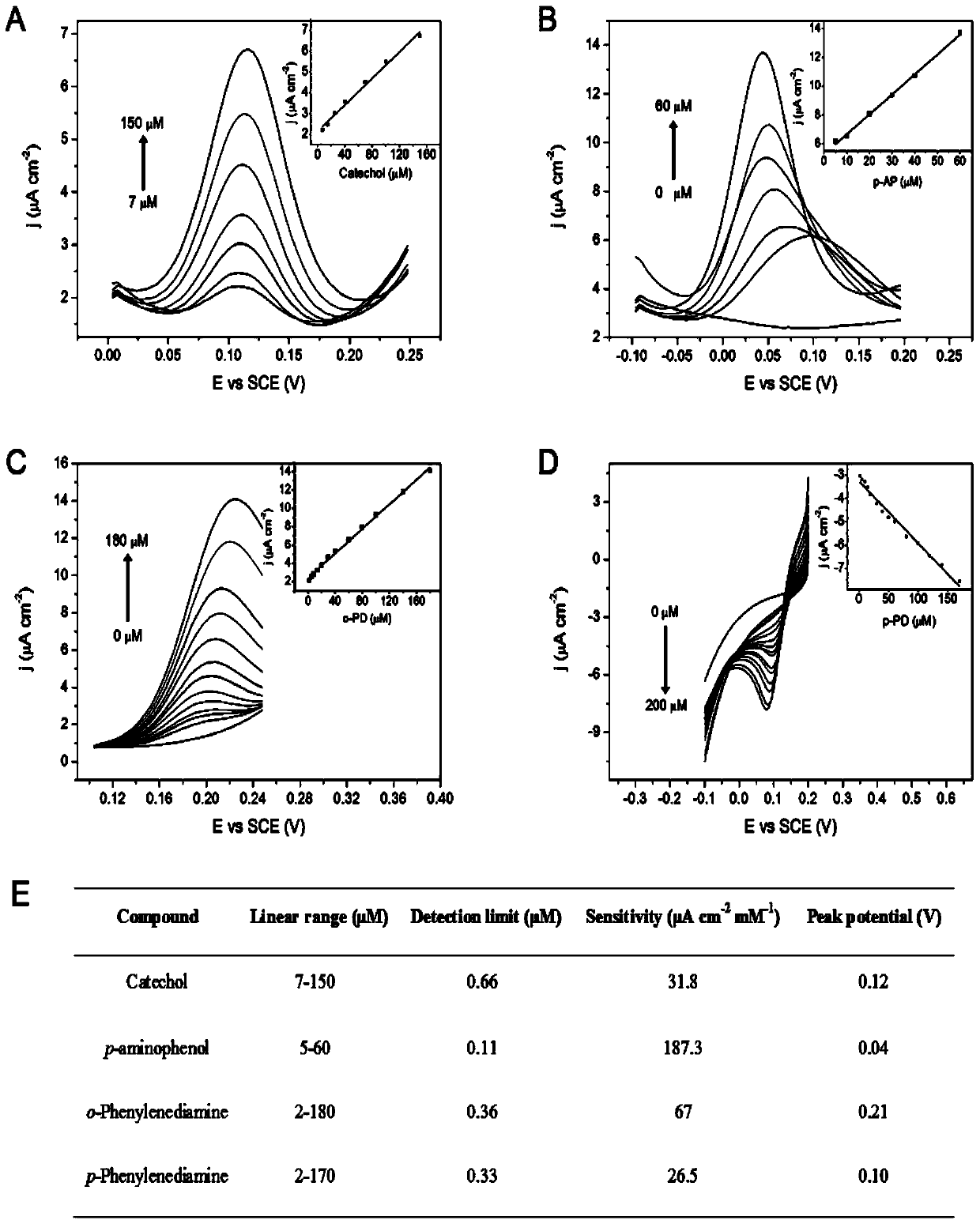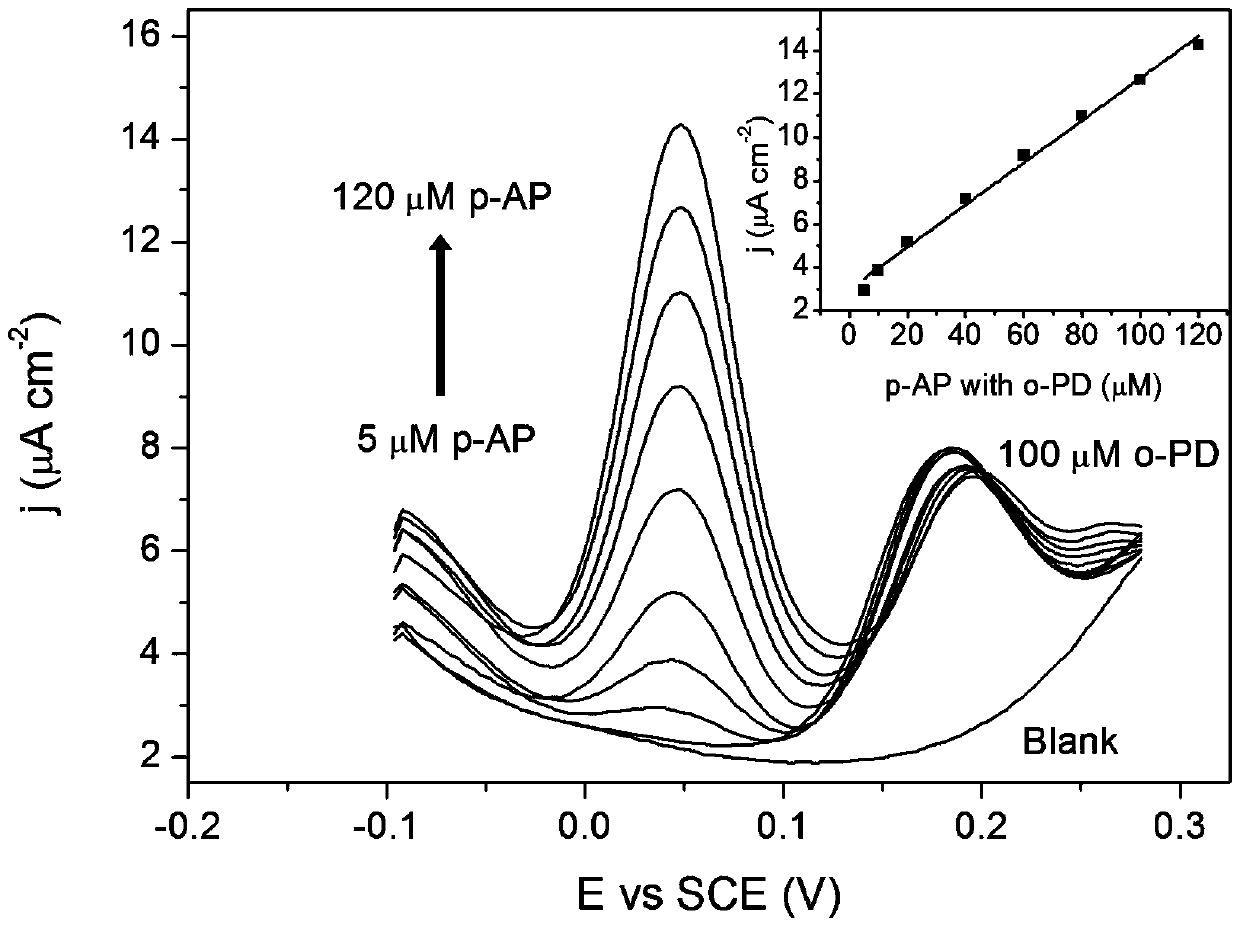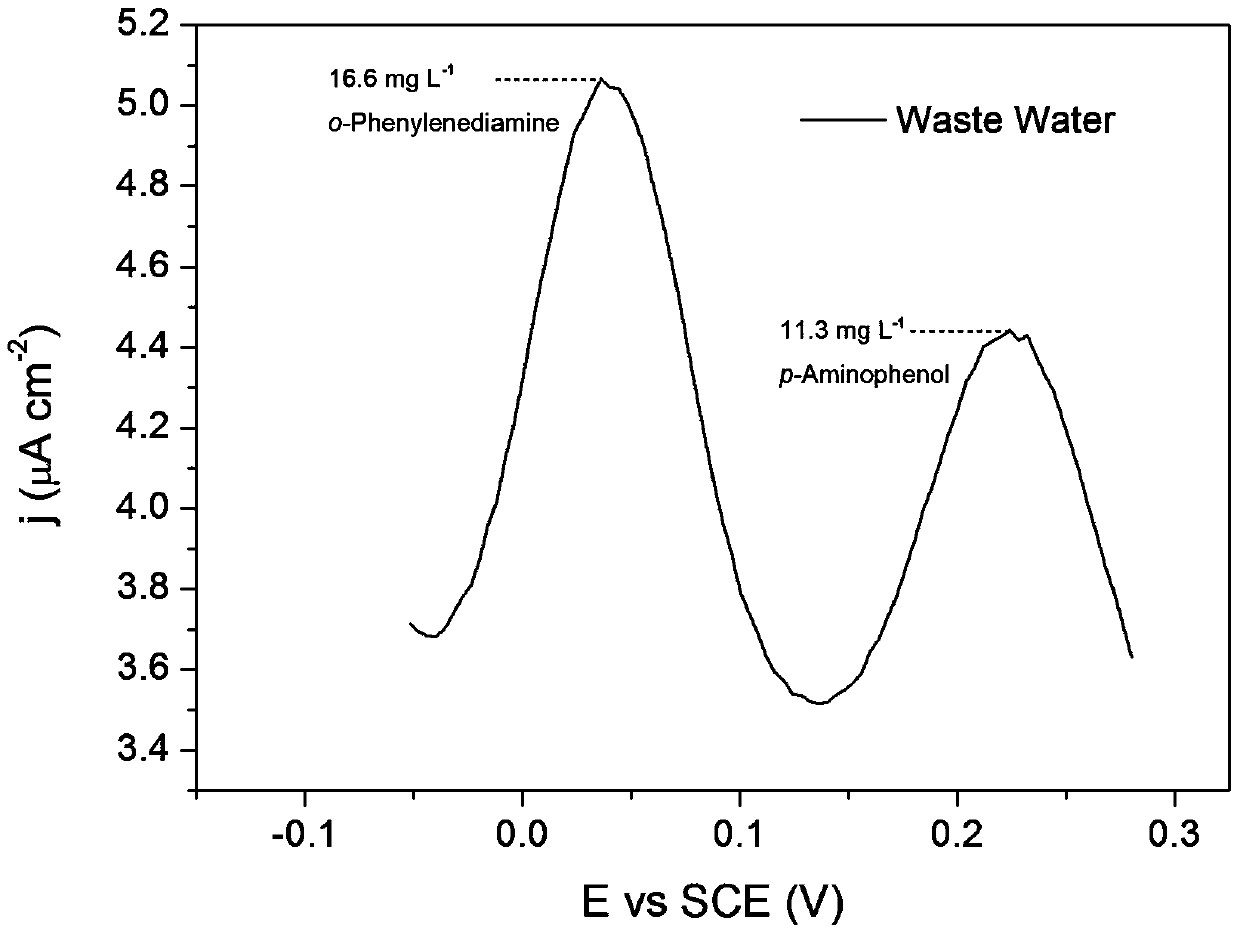A method for the rapid detection of aromatic pollutants in wastewater using a nanoporous gold horseradish peroxidase sensor
A technology of golden horseradish peroxide and horseradish peroxidase is applied in the field of detecting aromatic pollutants in wastewater, and achieves the effects of cumbersome solution steps, broad application prospects and reduced measurement standard deviation.
- Summary
- Abstract
- Description
- Claims
- Application Information
AI Technical Summary
Problems solved by technology
Method used
Image
Examples
Embodiment 1
[0034] Example 1: Preparation of a nanoporous gold horseradish peroxidase sensor electrode
[0035] (1) Preparation of nanoporous gold: place an Au / Ag alloy sheet with a thickness of 100 nm in pure nitric acid, and corrode it for 20 minutes at a temperature of 25° C. to prepare a nanoporous gold film;
[0036] (2) enzyme immobilization: horseradish peroxidase is dissolved in pH 7.0 concentration 50mM phosphate buffered saline, and the obtained concentration is 10mg / mL enzyme solution; The root peroxidase is attached and fixed on the surface of the nanoporous gold film, and the fixation time is 16 hours;
[0037] (3) Electrode preparation: paste the horseradish peroxidase / nanoporous gold complex prepared in step (2) on the surface of the glassy carbon electrode, and dry it in vacuum for 1.5 hours to prepare the horseradish peroxidase / nanoporous gold complex Gold / glassy carbon electrodes.
Embodiment 2
[0038] Example 2: Preparation of a nanoporous gold horseradish peroxidase sensor electrode
[0039] (1) Preparation of nanoporous gold: place an Au / Ag alloy sheet with a thickness of 100 nm in pure nitric acid, and corrode it for 30 minutes at a temperature of 20° C. to prepare a nanoporous gold film;
[0040] (2) Enzyme immobilization: Dissolve horseradish peroxidase in pH 7.0 concentration 50mM phosphate buffer to obtain a concentration of 1mg / mL enzyme solution; then immerse the prepared nanoporous gold film in the enzyme solution to make Horseradish peroxidase is attached and fixed on the surface of nanoporous gold film, and the fixation time is 24 hours;
[0041] (3) Electrode preparation: paste the horseradish peroxidase / nanoporous gold complex prepared in step (2) on the surface of the glassy carbon electrode, and dry it in vacuum for 1 hour to prepare the horseradish peroxidase / nanoporous gold complex Gold / glassy carbon electrodes.
Embodiment 3
[0042] Example 3: Preparation of a nanoporous gold horseradish peroxidase sensor electrode
[0043] (1) Preparation of nanoporous gold: place an Au / Ag alloy sheet with a thickness of 100 nm in pure nitric acid, and corrode it for 10 minutes at a temperature of 30° C. to prepare a nanoporous gold film;
[0044] (2) enzyme immobilization: horseradish peroxidase is dissolved in pH7.0 concentration 50mM phosphate buffered saline, and the obtained concentration is 20mg / mL enzyme solution; Horseradish peroxidase is attached and fixed on the surface of the nanoporous gold film, and the fixation time is 6 hours;
[0045] (3) Electrode preparation: paste the horseradish peroxidase / nanoporous gold complex prepared in step (2) on the surface of the glassy carbon electrode, and dry it in vacuum for 2 hours to prepare the horseradish peroxidase / nanoporous gold complex Gold / glassy carbon electrodes.
PUM
| Property | Measurement | Unit |
|---|---|---|
| thickness | aaaaa | aaaaa |
| thickness | aaaaa | aaaaa |
Abstract
Description
Claims
Application Information
 Login to View More
Login to View More - R&D
- Intellectual Property
- Life Sciences
- Materials
- Tech Scout
- Unparalleled Data Quality
- Higher Quality Content
- 60% Fewer Hallucinations
Browse by: Latest US Patents, China's latest patents, Technical Efficacy Thesaurus, Application Domain, Technology Topic, Popular Technical Reports.
© 2025 PatSnap. All rights reserved.Legal|Privacy policy|Modern Slavery Act Transparency Statement|Sitemap|About US| Contact US: help@patsnap.com



